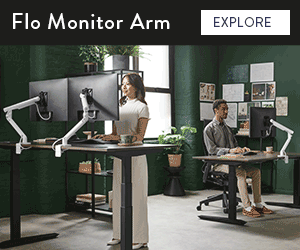
This week, in our three-part series on designing for wellbeing, Rosie Haslem, Director at spacelab_, shares why choice and control matter in the workplace
What sort of workplaces should we be creating to support physical wellbeing and mental health? This was the topic of conversation in the ‘Health Workers’ panel discussion I spoke at (chaired by OnOffice’s Editor), as part of January’s Architect@Work digital summit.
As Director of research and strategy at spacelab_, a design and architecture studio with a research-driven, human-focussed approach to creating spaces, my work is all about understanding what people want and need, in order to design the very best space for them – and of course for their health.
So, at a time when so many are rethinking what the future of work looks like, what are the key elements to consider when creating workplaces that will support people’s physical and mental wellbeing? In addition to providing spaces for collaboration, our workplaces need to offer people choice.
Great workplaces give people a diverse range of spaces so they can choose where to work from, depending on the task at hand, their personality and preferences, or simply how they’re feeling that day. Choice, and the empowerment this gives people in enabling them to do their best work, is critical to good mental health.
Read part one here: How good workplace design can improve physical and mental health
At spacelab_, we carried out a research experiment looking into people’s workpoint preferences, and whether these were correlated with personality type. We created a series of virtual environments with different set-ups and settings, and different furniture orientations and configurations. We then asked people to put a VR headset on and move through the spaces, choosing their preferred workpoint for a given task/context. We then analysed these preferences in relation to their personality type, and found some strong correlations.
For example, many of the more extroverted participants chose to sit on, or close to, main circulation routes for most of their activities as they wanted to be ‘part of the action’, and are stimulated by access to others. However, if they really wanted to focus and concentrate, they would choose very quiet and enclosed spaces – to limit risk of distraction.
Many of the introverts tended to prefer to sit in areas away from ‘high traffic’, ideally with their back to a wall for a degree of enclosure and perceived ‘safety’. Settings like this would work for most tasks, including deep work. Unlike their extrovert colleagues, the more introverted participants would not be so stimulated by activity going on in the surroundings, and they stated they would be able to concentrate amidst a ‘buzz’.
We’re all different. So giving people a choice of spaces and settings to accommodate their different preferences, and all the different tasks they need to do – across the day and week – is so important in supporting everyone to do their best work, and feel their best self.
Image by Henry Woide



























